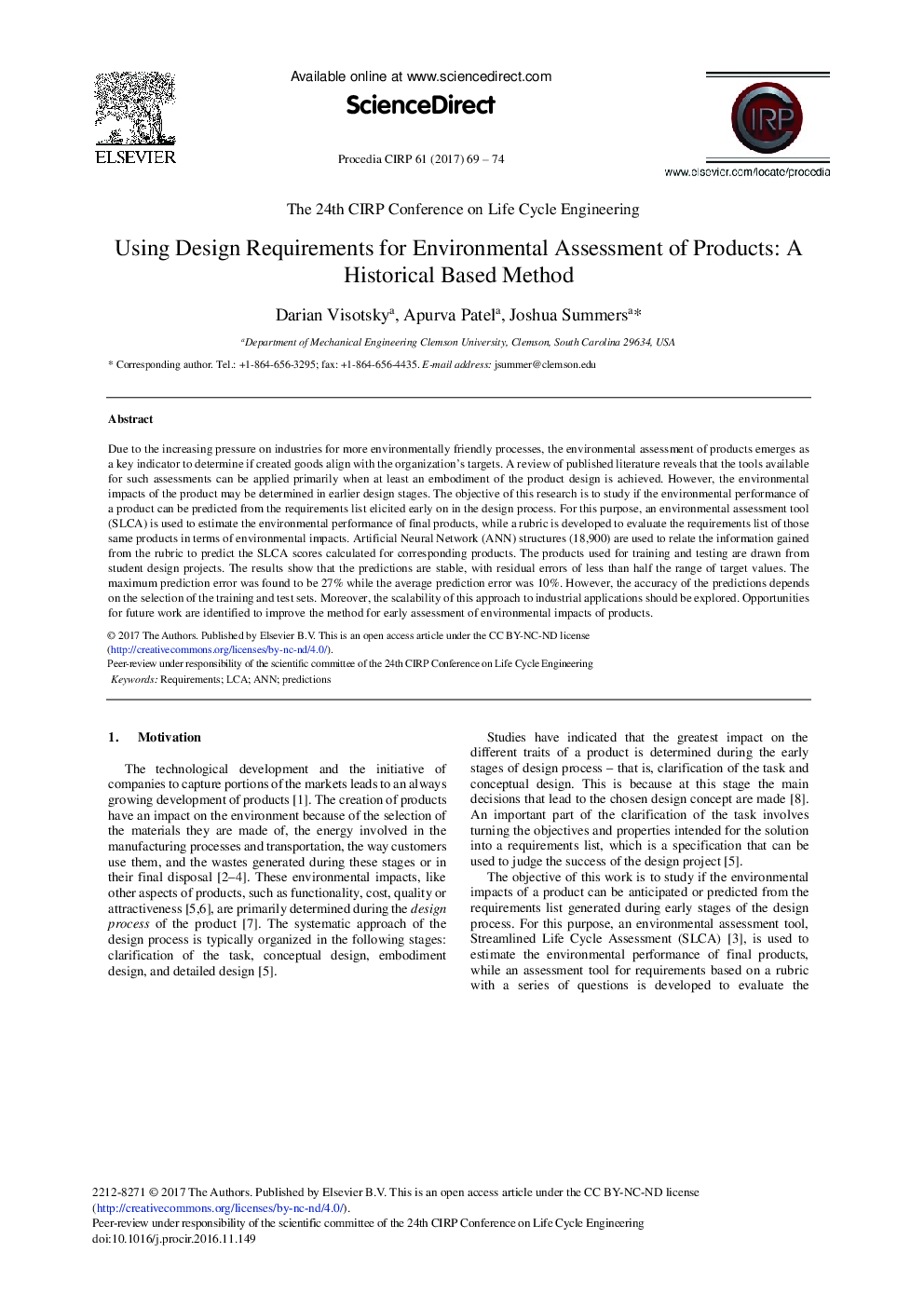| Article ID | Journal | Published Year | Pages | File Type |
|---|---|---|---|---|
| 5470482 | Procedia CIRP | 2017 | 6 Pages |
Abstract
Due to the increasing pressure on industries for more environmentally friendly processes, the environmental assessment of products emerges as a key indicator to determine if created goods align with the organization's targets. A review of published literature reveals that the tools available for such assessments can be applied primarily when at least an embodiment of the product design is achieved. However, the environmental impacts of the product may be determined in earlier design stages. The objective of this research is to study if the environmental performance of a product can be predicted from the requirements list elicited early on in the design process. For this purpose, an environmental assessment tool (SLCA) is used to estimate the environmental performance of final products, while a rubric is developed to evaluate the requirements list of those same products in terms of environmental impacts. Artificial Neural Network (ANN) structures (18,900) are used to relate the information gained from the rubric to predict the SLCA scores calculated for corresponding products. The products used for training and testing are drawn from student design projects. The results show that the predictions are stable, with residual errors of less than half the range of target values. The maximum prediction error was found to be 27% while the average prediction error was 10%. However, the accuracy of the predictions depends on the selection of the training and test sets. Moreover, the scalability of this approach to industrial applications should be explored. Opportunities for future work are identified to improve the method for early assessment of environmental impacts of products.
Keywords
Related Topics
Physical Sciences and Engineering
Engineering
Industrial and Manufacturing Engineering
Authors
Darian Visotsky, Apurva Patel, Joshua Summers,
